#water History
Explore tagged Tumblr posts
Text
Napoleon and Water
Excerpt from the book Aaron Burr in Exile: A Pariah in Paris, 1810-1811, by Jane Merrill and John Endicott
Aaron Burr lived in Paris for 15 months, and this book goes into detail about those years living under Napoleon’s rule. This part focuses on Napoleon’s water related reforms.
———
Napoleon’s fountains gave drinking water to the population, that is, children drank water, not beer. The water was free, not purchased. And the apartment would have had a separate water closet equipped with squat toilets (adopted from the Turks) and a bucket to wash it after use. Some restaurants and cafes had W.C.s, even one for ladies and one for gents. These were hooked into the sewer system that branched under each important street.
Napoleon merits points for delivering fresh water to Paris. If serving Paris with water from the d'Ourcq River by canals was not be a consummate success, Paris gained 40 new fountains, and the emperor commanded that fountains run all day (instead of a few limited hours) and that the water be free of charge.
Perhaps the most laudable of Napoleon’s policies were utilitarian city works, especially bringing clean water and sanitation to Paris. The improvements to infrastructure included new quays to prevent floods, new gutters and pavement, new aqueducts and fountains, and relocating cemeteries and slaughterhouses to the outskirts of the city. This was also a way of keeping up employment. An Austrian aristocrat in town during Napoleon’s wedding to Marie-Louise wrote his mother, in Vienna: “Nothing can give an idea of the immense projects undertaken simultaneously in Paris. The incoherence of it is incredible; one cannot imagine that the life of a single man would be enough to finish them.”
It was a tall order. Previous rulers had been aware of the problems and one big engineering initiative, a failed marvel, had been the waterworks at Marly, located on the banks of the Seine about seven miles from Paris. Louis XIV had it constructed to pump water from the river to his chateaux of Versailles and Marly. This was the machine marvel of its age, with 250 pumps that forced river water up a 500-foot rise to an aqueduct, and it was a sight Burr mentions going to see. By 1817 the “Marly machine” had deteriorated because it was made of wood, and the waterworks were abandoned.
Charles-Augustin Sainte-Beuve, the prominent 19th century literary critic, wrote that there had been “ten years of anarchy, sedition and laxity, during which no useful work had been undertaken, not a street had been cleaned, not a residence repaired nothing improved or cleansed.” Postrevolutionary Paris was at a nadir in terms of both the inadequate, disease-ridden water supply and the filthy streets, which were basically open sewers, deep with black mud and refuse.
“Napoleon,” writes Alistair Horne, “was obsessed by the water of Paris, and everything to do with it.”
Parisians had mostly been getting their water directly from the Seine or lining up at the scant pay fountains. In 1806, nineteen new wells for fountains were dug that flowed day and night and were free. Napoleon had a canal built 60 miles from the River Ourcq, ordering 500 men to dig it, while still a consul in 1801. It brought water to the Bassin de la Villette, opening in 1808. Some doubted the wisdom of having such an abundance of water—an oriental luxury that might incur moral decay. Now the supply of water for firefighting was also much improved. The canal had light boats, as Napoleon tried to make back some of the huge expenditure by licensing navigation, and a circular aqueduct from which underground conduits went to the central city. In 1810, there were still many water porters wheeling barrels through the city.
Now Napoleon attacked the problem of the Seine as a catchall for pollution. Parisians were so used to it that men swam naked in the river and a contemporary guidebook advised merely that the water of the Seine had no ill effects on foreigners so long as they drank it mixed with wine or a drop of vinegar. Thus houses on bridges were demolished and an immense push began to clean and modernize the city sewers.
As this book is about Aaron Burr, here is section about Burr taking inspiration by a new water related invention during his time in Paris:
Remarkably for someone who was very aware of his health, he never complained of the water. He did, however, take an interest in an invention to make it easier to dig a well. When the inventor of a process to make vinegar from the sap of any tree was not in his shop, Burr and a friend, “Crede”, went to see another invention: “We went then to see Mons. Cagniard, and his new invention of raising water and performing any mechanical operation. His apparatus is a screw of Archimedes turned the reverse, air, water, and quick silver. Cagniard was abroad; but we saw a model, and worked it, and got the report of a committee of the Institute on the subject. If the thing performs what is said I will apply it to give water to Charleston.”
[Bold italics for quotations by me]
#Aaron Burr in Exile: A Pariah in Paris 1810-1811#Aaron Burr#Jane Merrill#John Endicott#napoleon#napoleonic era#napoleonic#napoleon bonaparte#first french empire#french empire#19th century#france#history#Paris#french history#water#water history#Napoleon’s reforms#social reforms#social history#reforms#napoleonic reforms
104 notes
·
View notes
Text











Water Lilies painted by Claude Monet (1840 - 1926)
#art#art history#artwork#painting#history#culture#vintage#claude monet#impressionism#water lilies#water lily
31K notes
·
View notes
Text
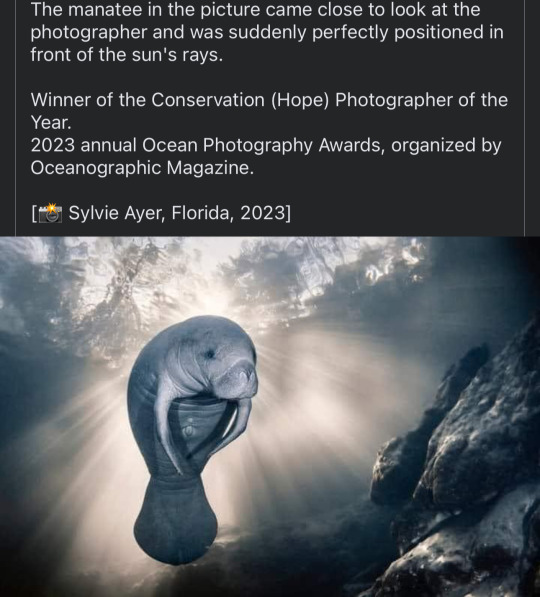
this manatee looks like it’s in a skyrim loading screen
#lol good luck finding all of the photoshopped versions in the rb history. ‘manatee restored’ is still my favorite of all time#misc#I encourage anyone dyslexic to try rotating him in your mind. I can’t do that; which is why I’m asking you to.#also: a bunch of tags are surprised this isn’t ‘shopped#it’s the lighting. backlit by the sun (which is diffused through the water) but also forelit artificially#the artificial light - a flash pack or something - casts a hard shadow under the creatures arm#which normally wouldn’t be possible if backlit by the SUN; you’d see a less-hard/more-fragmented shadow above water#as light sources ‘compete’ in a sense - and since there aren’t any light sources which can outshine the literal sun#it looks a bit weird when the darkest shadow is being cast from any other origin point - which is what’s essentially happening here#I don’t know the mechanics of how light travels through water; but I know the effect is substantial even with relatively short distances#also: it’s been balanced and color corrected by the author of the photo - who made deliberate choices to bring out the full potential#so it’s not like it’s a fresh and untouched export#but the kind of ‘tacked on’ appearance of the creature is a result of the lighting conditions within the image
62K notes
·
View notes
Text



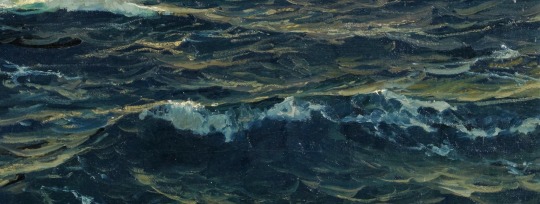


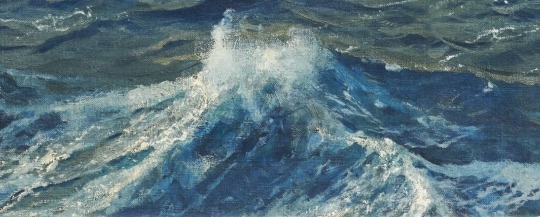
Rise and collapse of a wave. Details of paintings by Michael Zeno Diemer (1867-1939)
#art#sea#ocean#aesthetic#water#summer#details#art detail#painting#paintings#art history#tale#I need - no: crave this.#I feel splashy.
31K notes
·
View notes
Text
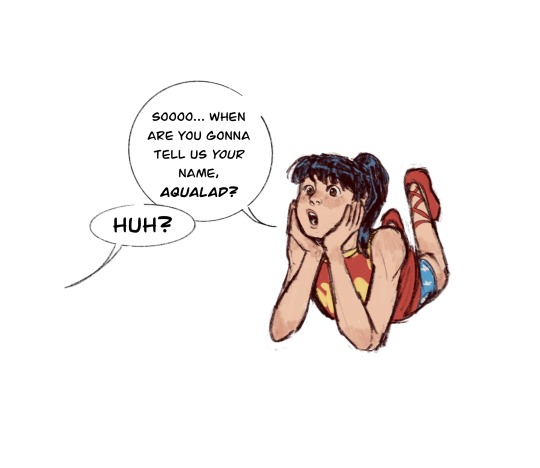

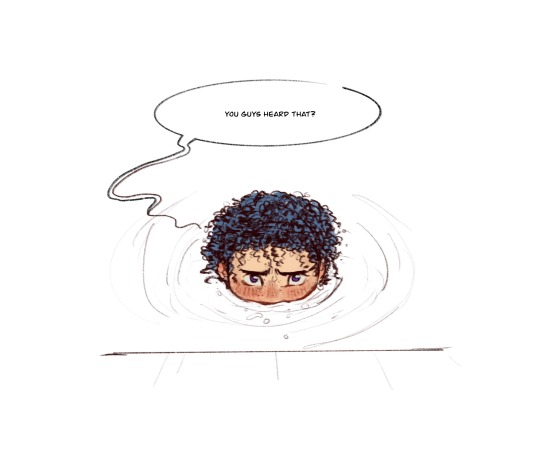
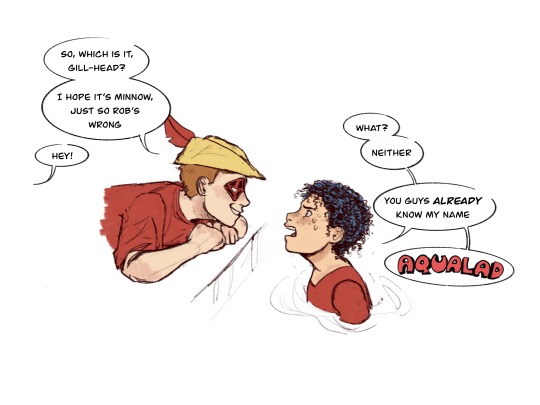
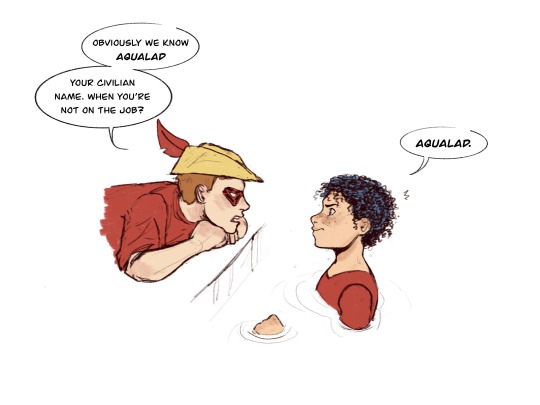

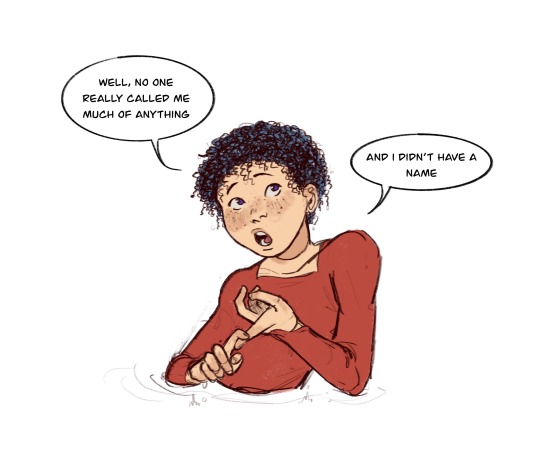

identity reveals are always fun
#batcave search history that night: friend has no name. atlantis naming conventions. atlantian names. r there birth certificates in atlantis#theyre so fun to draw guys im sick with it#also: everyone thinking 'But his name is Garth'#I know that and YOU know that but he doesn't until like..... a few years later. canonically#Unnamed Youth 'Aqualad' No Last Name#and arthur does call him both minnow and tadpole so wally n dick r both right in their own ways#and for ppl who really dont know. garth was abandoned as an infant and didnt hang w anyone until arthur took him in lol. what a life#and arthur girl...... was aqualad the best and only u could do#teen titans#fab five#donna troy#wally west#dick grayson#garth of shayeris#roy harper#dc#dc comics#my art#everyone hangin by the salt water pool so garth can hang w them :]
13K notes
·
View notes
Text
Modern History
Water conservation has been a critical concern throughout human history due to its fundamental importance for sustaining life and civilizations. Various historical events have demonstrated the significance of water conservation, and their relevance to contemporary issues is clear in the face of growing global water scarcity and environmental challenges. Here are three key historical events that underscore the importance of water conservation and its contemporary relevance:
Ancient Mesopotamia and the Tigris-Euphrates River System: Ancient Mesopotamia, often referred to as the "Cradle of Civilization," was situated between the Tigris and Euphrates rivers in modern-day Iraq. The people of Mesopotamia are known for their sophisticated irrigation systems, such as canals and levees, which allowed them to harness the seasonal floods and manage water resources effectively. Water conservation was integral to their agricultural and economic success.Relevance to Contemporary Issues: Today, the modern Middle East faces significant water scarcity, with disputes over water rights and resource management becoming increasingly common. The historical practices of water conservation in Mesopotamia serve as a valuable lesson for contemporary water resource management, emphasizing the need for sustainable irrigation and responsible water usage.
Ancient Rome and Aqueducts: Ancient Rome is renowned for its extensive aqueduct system, which transported water over long distances to supply cities, baths, and public fountains. The construction and maintenance of aqueducts were critical to the functioning of the Roman Empire, and it exemplifies their commitment to water conservation and distribution.Relevance to Contemporary Issues: Many modern cities face water supply and distribution challenges. The Roman aqueduct system is a historical model for efficient water transportation and infrastructure. It emphasizes the importance of maintaining and updating water supply systems to meet the needs of growing urban populations while minimizing waste and contamination.
Dust Bowl and Soil Erosion in the United States (1930s): During the 1930s, the Dust Bowl was a period of severe drought and dust storms that affected the American Great Plains. Unsustainable agricultural practices and excessive water usage contributed to soil erosion and a significant loss of arable land. This environmental catastrophe led to the development of soil and water conservation programs, including the establishment of the Soil Conservation Service (now the Natural Resources Conservation Service) in the United States.Relevance to Contemporary Issues: Land degradation, soil erosion, and water conservation remain vital concerns today, not only in the United States but also worldwide. The Dust Bowl serves as a historical reminder of the destructive consequences of poor land and water management, underscoring the importance of sustainable agricultural and conservation practices in contemporary times.
In conclusion, the historical aspects of water conservation demonstrate the long-standing importance of responsible water management. These historical events highlight the need for sustainable practices and resource management in the face of contemporary challenges, such as water scarcity, urbanization, and environmental degradation. By learning from the lessons of the past, society can better address and mitigate the water-related issues of today and tomorrow.

0 notes
Text

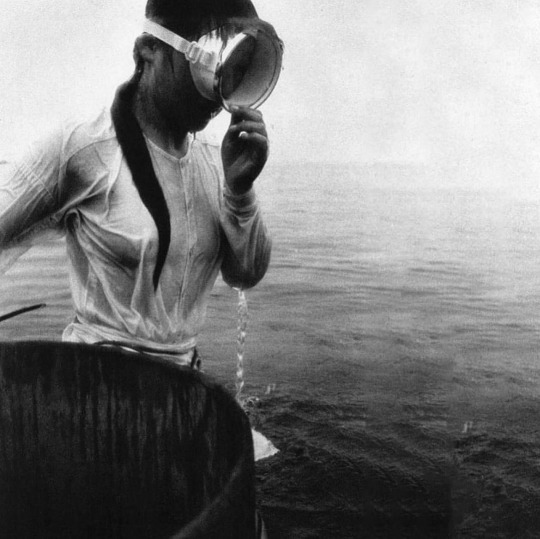
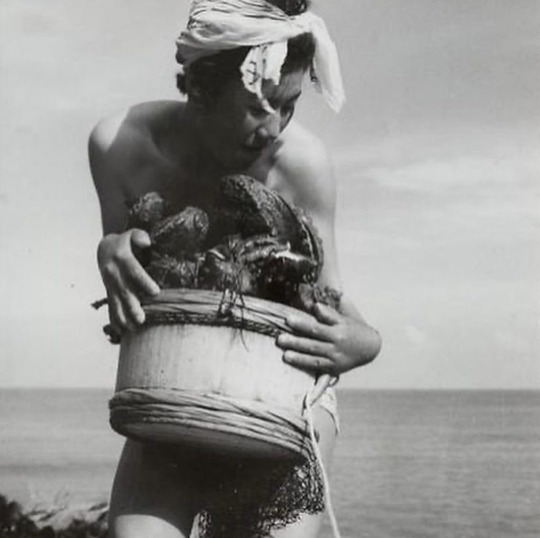
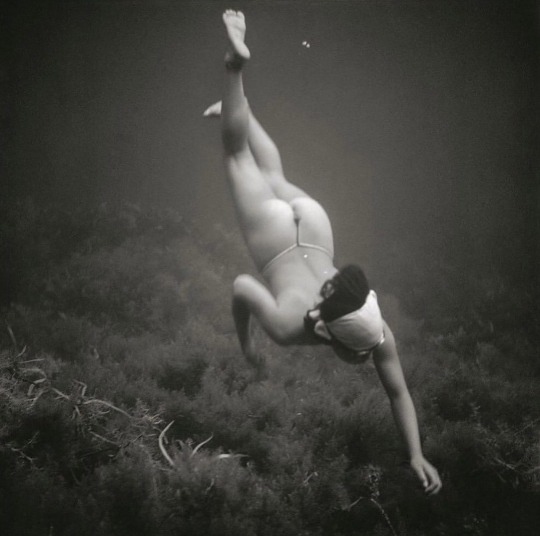
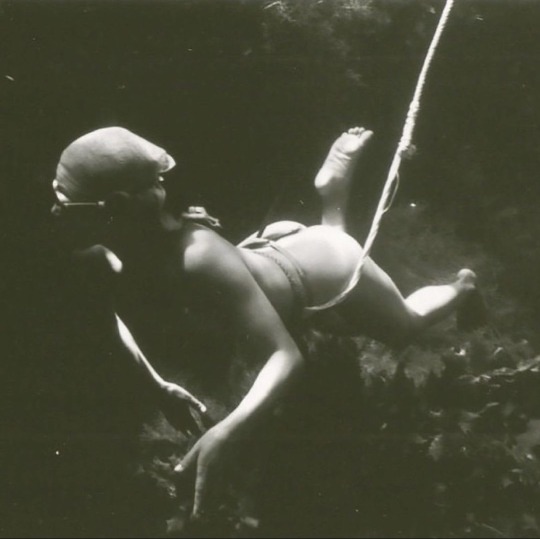

The Ama (sea women) are a group of japanese divers famous for collecting pearls.
Even in modern times, ama dive without scuba gear or air tanks, making them a traditional sort of free-diver.
15K notes
·
View notes
Text



William Trost Richards (American, 1833–1905), "South-West Point, Conanicut" (details), 1878/79
#William Trost Richards#art#american art#painting#landscape#seascape#watercolor#gouache#19th century art#19th century#1870s#paintings#art detail#art history#aesthetic#sea#ocean#waves#water#seagulls
1K notes
·
View notes
Text
“regulus fell first but james fell harder” WRONG. james fell in a pool and regulus laughed at him so hard he almost fell in too, and they realised in that exact moment that they’re made for each other
#dw james caught reg before he touched the water#and then they locked eyes#and the rest is history#i’m so sorry to everyone who followed me for quality content#marauders#jegulus#starchaser#regulus black#james potter
2K notes
·
View notes
Text

Venezia, Italy
#Venezia#Venice#Italia#Italy#art#Architecture#history#Travel Photography#water#bridge#river#photo#sky#old city#cityscpae#squares#murano#Burano#urban travel#photography#tarvel#Tourism#spring#summer#Europe#venetian carnival#travel#nature#landscape#city
2K notes
·
View notes
Text
It has come to my attention that I haven't drawn sun and moon as chibis yet
I have rectified the situation:
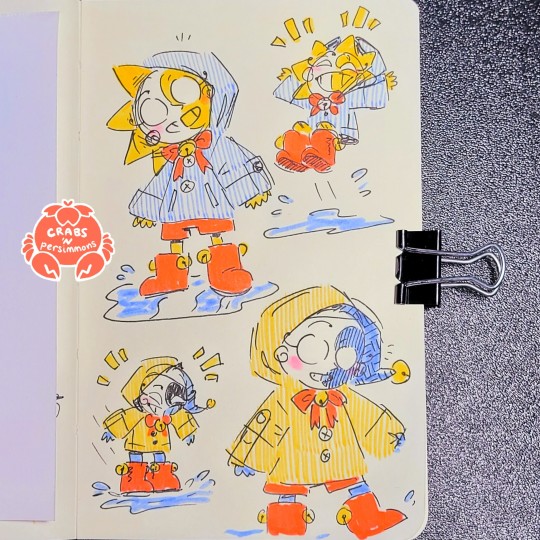
all is right with the world
#fnaf sun#fnaf moon#dca fandom#fnaf dca#drew these during a break from my course modules#they gave me life as I reread the same page about the rivetting history of Canadian land description over and over again#I don't think I retained anything#but their bright colours and childish glee over puddles of water have healed me#crab art#traditional art#I'mma go sleep now#tomorrow's module is an estimated 8 hrs ha HA#five nights at freddys daycare attendant... save me...#five nights at freddys daycare attendant#save me five nights at freddys daycare attendant
3K notes
·
View notes
Text
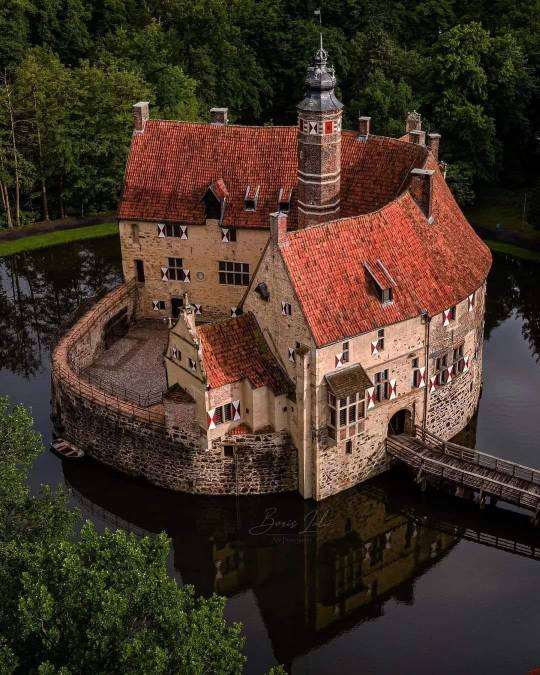
Burg Vischering,
Lüdinghausen, Münsterland, North Rhine-Westphalia region, Germany,
@airpixelshots
#art#design#architecture#history#luxury lifestyle#style#luxury house#luxury home#castle#burg#burg vischering#germany#water castle#ludinghausen#north rhine-westphalia#airpixelshots
1K notes
·
View notes
Text






She swallowed past a lump in her throat, looked up into her son’s eyes. "Paul…I want you to do something for me: choose the course of happiness. Your desert woman, marry her if that’s your wish. Defy everyone and everything to do this. But choose your own course. I…."
LADY JESSICA & CHANI KYNES IN DUNE: PART TWO (2024)
#dune part two#dune#dune part 2#duneedit#filmedit#filmgifs#doyouevenfilm#fyeahmovies#moviegifs#rebecca ferguson#zendaya#lady jessica#chani kynes#rfergusonedit#zendayaedit#maya edits#look who suddenly cares about her son again lmaooo#actually though thinking thoughts about how this is the only time we see her without the layers and layers of fabric post water of life#history will remember us as wives...#it is impossible to make this scene look good. literally impossible. denis hates me personally#dune spoilers#film#jessica atreides#1k
1K notes
·
View notes
Text

Have you ever seen the Spectacled Eider (Somateria fischeri)? During breeding season, males sport green plumage in a pattern that's reminiscent of glasses. While this doesn't make their vision sharper, it does help males stand out from the crowd.For the rest of the year, they revert to mottled-brown plumage, similar to females, which have more subdued spectacles year-round. This duck is unique in that it lives in the frigid high Arctic. It sustains itself on a diet of mostly mollusks and crustaceans, diving to pluck prey from the ocean floor.
Photo: Olaf Oliviero Riemer, CC BY-SA 3.0, Wikimedia Commons
#science#nature#natural history#animals#birds#ornithology#ducks#spectacled eider#water fowl#cool animals#did you know#fact of the day#arctic#glasses
1K notes
·
View notes
Text
putting my prediction on record now that the coming decade is going to see the rise of viral-marketed fancy at-home water filtration systems, driving and driven by a drastic reduction in the quality of U.S. tap water (given that we are in a 'replacement era' where our current infrastructure is reaching the end of its lifespan--but isn't being replaced). also guessing that by the 2030s access to drinkable tap water will be a mainstream class issue, with low-income & unstably housed people increasingly forced to rely on expensive bottled water when they can't afford the up-front cost of at-home filtration--and with this being portrayed in media as a "moral failing" and short-sighted "choice," rather than a basic failure of our political & economic systems. really hope i'm just being alarmist, but plenty of this already happens in other countries, and the U.S. is in a state of decline, so. here's praying this post ages into irrelevance. timestamped April 2023
#apollo don't fucking touch this one#serious post#not a shitpost#hope i forget about this post and have no reason to ever look back on it one day#fyi i'm aware that access to potable water is already a major issue in parts of the U.S. yes i know flint michigan exists#i'm saying that this issue is going to GROW unless local & federal governments work together to fix it.#so it's a matter of if we trust them to fix it. And well--do you?#what are the chances the government just denies there's a problem until the water actually turns brown#at which point it's already been common knowledge for years and people have just become resigned and that's our new normal#i'm mean come on. how many of us already believe that we're being exposed to dangerous pollutants we don't know about and can't avoid#like that's pretty much just part of being a modern consumer. accepting that companies will happily endanger your life for a few pennies#and the most you'll get is like a $50 gift card as part of a class action rebate 20 years down the line#probably the history books will look back on Flint as a warning and a harbinger that went ignored#luxury condos will advertise their built-in top-of-the-line filtration systems--live here and you can drink water straight from your tap!#watch the elite professional class putting $700 dyson water filtration systems on their wedding registry#while the rest of us figure out how to fit water delivery into our grocery budget while putting 90% of our paycheck towards rent#also eggs are $15
5K notes
·
View notes



